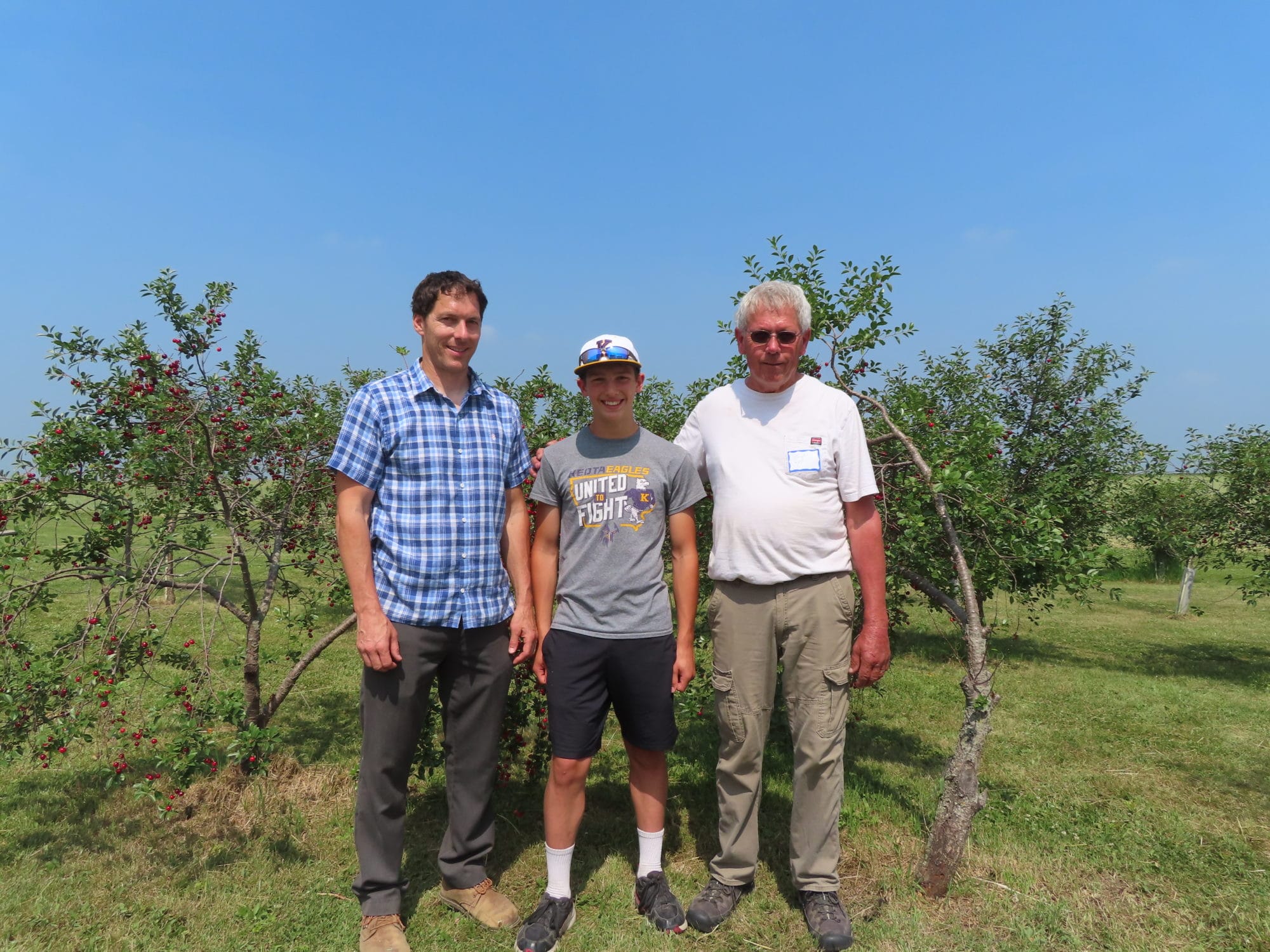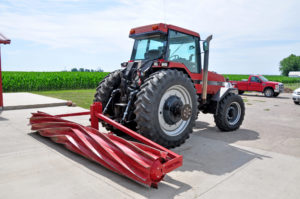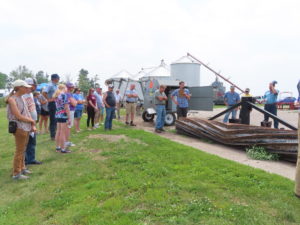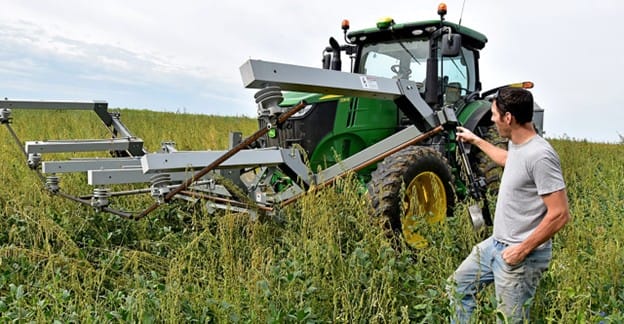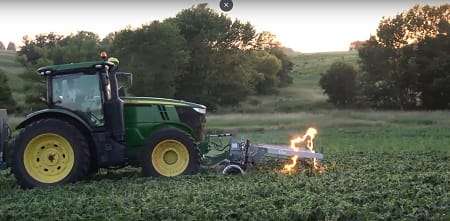Cover Cropping on an Organic No-Till Farm
Levi Lyle, an organic no-till farmer, works alongside his dad, Trent Lyle, in Washington County, Iowa. Levi follows a holistic systems approach to agriculture, aiming to maintain an intimate connection to the land. For him, that means staying small-scale and growing crops without synthetic pesticides or fertilizers.
Organic weed control and cover crop termination can be a challenge without herbicides. However, Levi has found a recipe that works for him: he uses a roller-crimper for cover crop termination and The Weed Zapper for weed control.
The Lyles have two roller-crimpers: one they purchased from a company in the eastern United States and another built locally at Vittetoe Manufacturing. They are well used in their fully organic system, but they were also essential during the transition period.
Levi says, “They were the best way to transition to organic because you can’t sell your crops for organic prices, but you also can’t use any herbicides or conventional fertilizers, so we were able to grow soybeans that yielded just the same as the conventional soybeans on our farm.”
When Levi began transitioning his field, he roller-crimped the rye and planted crops at the same time, which was an efficient process. He did this by mounting the roller-crimper on the front of the tractor and attaching the 15-inch row planter to the back.
He switched to planting 30-inch rows to accommodate The Weed Zapper. He now plants the soybeans a few weeks before roller-crimping the rye. If crimping isn’t done at the right time, it could damage the soybeans. Levi determined the best time to roller-crimp is when the soybeans are at the three-leaf stage, which is when they’re less vulnerable to damage.
Both roller-crimpers have drums that can hold water for extra weight, but Levi hasn’t found this necessary. Hydraulic downforce could also be used, but this could damage the roller-crimper – and he hasn’t found this necessary either.
“There is a benefit to going fast,” he says, “because all you are trying to do is crease the stem of the rye, and it only needs to crease in one spot for the crimping to be effective.”
The roller-crimpers can be mounted on either the front or the back of the tractor; the direction they roll doesn’t matter. One of Levi’s crimpers throws a little dirt when it’s front-mounted, but since his goal is to minimize soil disturbance, he mounts it on the back of the tractor.
Levi has experimented with rye varieties to find what’s best suited for his farming practices. He plants Elbon rye because it reaches anthesis – the stage where the rye flower releases pollen – earlier than other varieties. At anthesis, rye stalks become more brittle, making them easier to crimp.
Roller-crimping works by interrupting the water flow into a plant. Levi crimps his fields when 90% of the rye is at anthesis. This usually occurs around June 1, depending on weather conditions.
Levi plants rye at a 2.5 bushels per acre rate. He says it’s unnecessary to do more than one bushel per acre, but in an organic field, “you only have one chance to get it right,” so he plants the extra bushels.
When rye is planted in mid to late September, it has time to tiller – producing more grass shoots from the base of the plant. This creates a larger plant that covers more soil. Some farmers rely on this method for more ground coverage to protect soil and suppress weeds.
Planting Rye and Planting into Rye
Planting dates for seeding rye after a corn crop vary each year. Levi has tried planting 103-day corn, hoping it would come out of the field earlier and allow for an earlier rye planting. That year, the corn didn’t cooperate and was in the field later than expected.
He waited until December to plant rye after receiving permission for a later planting date from the NRCS. Levi says there was still plenty of biomass for roller-crimping, even with the late planting. The rye might only be knee-high instead of chest-high, but the biomass is there – especially when you plant at the 2.5 bushels per acre seeding rate.
Levi has also experimented with soybean row spacing. When he first started planting soybeans, he drilled them in 15-inch rows He now drills them in 30-inch rows for easier management.
The Weed Zapper
The Weed Zapper is another tool used by farmers who use organic practices or are fighting herbicide-resistant weeds. It consists of a generator and a boom. When the boom touches a weed, it sends an electrical current through the plant, boiling the water inside its cells, causing the cell walls to burst. This immediately kills the plant. It’s most effective on weeds growing above the crop canopy.
Levi prefers mounting the boom on the front of the tractor so he can see when it needs to be lowered for weeds or raised when going through waterways. The boom has two bars running across it, but only the front one is electrified. The back bar is a grounding bar which prevents static electricity.
Using electricity for weed control has been around for 80 years, but it wasn’t until the last decade that it became more accessible and safer to use. Multiple sensors throughout the system monitor operator presence, speed, and other potentially dangerous situations, shutting off the electrical output if needed. There is also a safeguard to prevent overheating; it will shut down and go through a cooling process if needed.
In organic no-till farming, it’s important to have access to non-chemical weed control options, from cover crops to machinery. Levi has found that roller-crimping and using The Weed Zapper work well and complement his holistic approach to farming.

